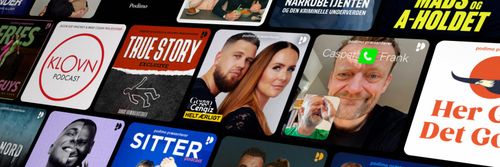The Top 5 Mistakes B2B Marketers Are Making Today with Drew Neisser
The Revenue-Driven CMO - En podcast af Chris Mechanic

Kategorier:
Welcome back to the latest episode of “3-Minute Marketing”, where we talk to the greatest minds in the marketing game today & share their most actionable insights with you. Today, I’m speaking with my friend Drew Neisser, CEO at Renegade Marketing & CMO Huddles. For those who don’t know Drew, he’s a well-loved, 40+-year veteran of the B2B brand marketing world. He’s the guy who came up with the name for the Panasonic “Toughbook”, among other famous brand marketing wins. Drew’s dropping a new book titled Renegade Marketing: 12 Steps to Building Unbeatable B2B Brands on October 5th. In line with the theme of his new book, I ask him, “What are the top 5 mistakes B2B marketers are making today & what should they be doing instead?” Show Notes: Mistake #1: The “peanut butter effect” — trying to do too many personas, channels, messages, etc. Instead, create a simple story (8 words or less) & tell it 18 different ways to customers, prospects & employees. Mistake #2: The targets are backwards — most marketers prioritize prospects, then customers, then employees. Reverse that, because if employees & customers don’t buy into your brand story, you’re dead in the water. If they do, they’ll be your best advocates. Mistake #3: Rebranding without changing the product or service — marketers who do this are putting a coat of paint on an old barn. Instead, first make sure the product or service lives up to the new brand promise first. Mistake #4: Spending too much on Martech — Martech is NOT marketing, it’s just tools. Automate attentively, get Martech spend under 10% of total budgets & figure out what piece of tech you can remove for each one you add. Mistake #5: Retreating during a crisis — too many CMOs focused on furloughing staff & cutting back during the pandemic. Now they’re scrambling. The winners realized that crisis is an opportunity to shine by reinvesting, leaning into their customer relationships & showing they were essential. To tell your story effectively, create a purpose-driven story statement — 8 words or less that encapsulate everything about your brand. Then make it real for your employees, customers & prospects. To measure the effectiveness of your brand, have some basic brand health measures in place. These could include a blend of customer satisfaction, employee satisfaction, acquisition & awareness. Just evaluating marketing on CAC is problematic because the brand drives metrics like speed-to-close, frequency of inclusion in RFPs, etc. 20% of your marketing budget should be in experimentation at all times. Consider using Pollfish, Propeller Insights,. SurveyMonkey panels or Wynter for B2B surveys & panels. Your purpose-driven story doesn’t really mean/do anything until you execute against it & fulfill its promise over time. And in doing so, you effectively become a new (better) company.

